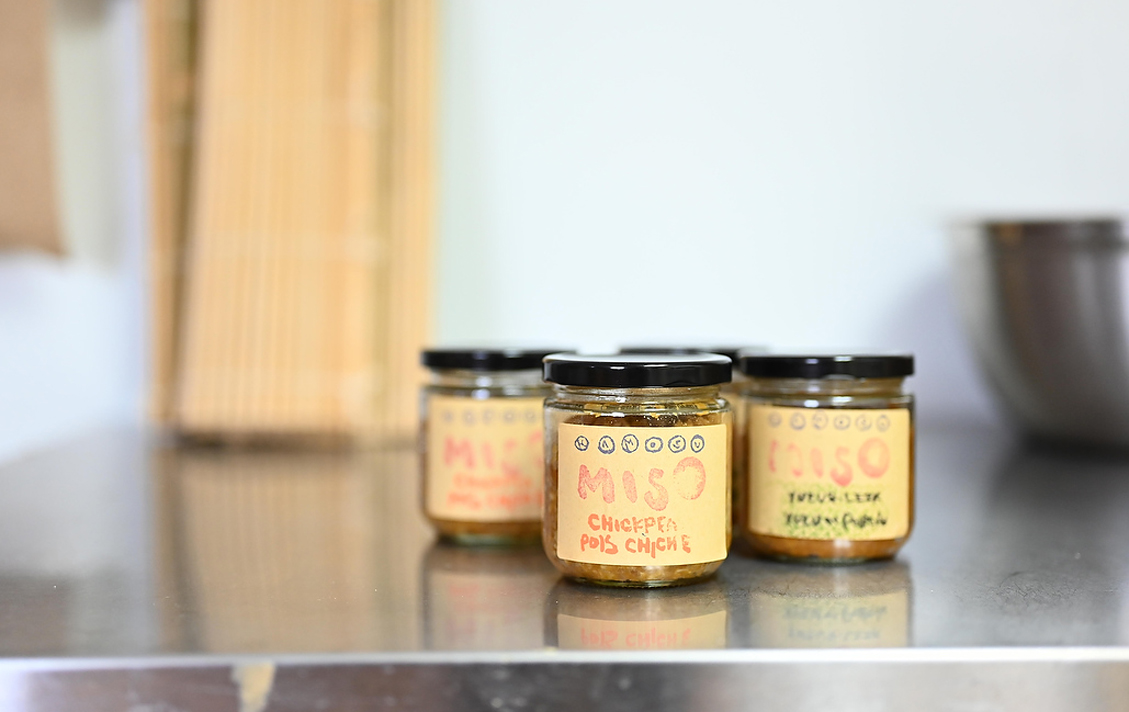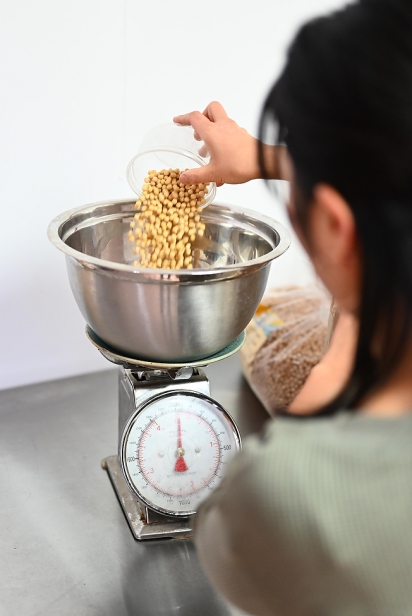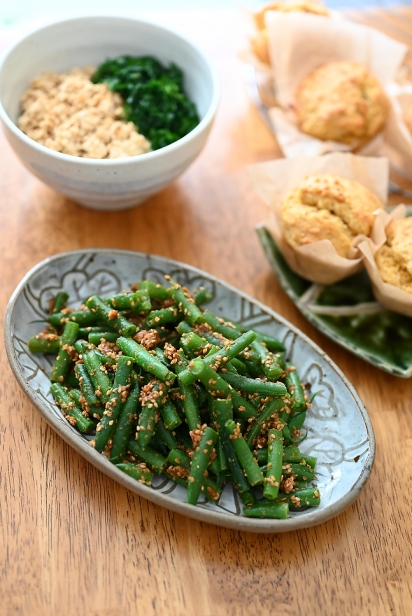Traditional Miso, Canadian Flavors
When most people think about the traditional Japanese bean paste, miso, they don't associate it with Canadian flavours. However, Etsuko Inoue, owner of Kamosu Miso, has blended Canadian influences from her last 13 years, living in the capital, to create somewhat of a hybrid product.
Her miso is traditional enough to please purists, yet innovative enough to interest consumers new to the subtle blend of sweet and salty flavours.
Miso is a Japanese seasoning made by combining salt, soybeans and koji, a fungal culture typically cultivated on rice or other grains. It can be enjoyed in many dishes and adds complexity to sauces and soups.
Inoue didn't actually know how to make miso when she lived in Chiba prefecture, next to Tokyo. Despite the area being the country’s second-largest agricultural producer, it took a move to Canada before she tried her hand at the traditional practice.
When she first moved to Ottawa, she found it hard to find a miso paste she liked, which led her to experiment and create her own. “I think miso made by big companies has stuff that’s not necessary. Miso just needs simple ingredients like beans, rice, salt and culture. So, I use good-quality organic beans and rice and also the slow fermentation makes the deeper flavours.”
That slow fermentation is a process that takes two to three years, depending on the type of miso she is making. Most customers prefer the traditional brown-rice miso, but her favourite is rather more creative. She uses yuzu, a traditional Japanese citrus fruit, and mixes it with Canadian flavours to create something unique.
“The base is brown-rice miso, then I add leeks and yuzu powder and a little bit of local maple syrup. I love using local products. My kids like to eat it as a dip with veggie sticks. I like the combination of leeks, yuzu and maple syrup,” she says.
Miso is often considered a savoury food, but it has a balance of flavours that make it suitable for a range of dishes, as Inoue explains. “I have made a cookie. Instead of salt, I put a little bit of miso paste. Miso is not only salty, it has a sweet flavour too, that makes it nice,” she says.
She has now been making her miso products for more than a decade, selling to friends and family before beginning to offer her wares at the Ottawa Farmers' Market two years ago.
This experience has deepened her interest and love for miso and she has really enjoyed seeing how other people are also becoming passionate about the humble yet potent paste.
“I like that people can try different kinds at the market and we can talk about my product. Some people always buy the same brown-rice miso, some people buy the yuzu or the spicy miso. I was surprised that there are people who already know how to make miso or who are even trying to make rice koji at home.”
In addition to being delicious, miso offers many health benefits.
“In fermentation, miso has beneficial micro-organisms that help your digestion and maintain a strong immune system. Miso is normally made with soybeans and rice, but I use other kinds of beans. It’s a good protein and it contains all essential amino acids that your body needs,” she says.
Those different beans include chickpeas and navy beans. Although Inoue prefers the traditional taste of soybeans herself, she was quick to adapt, creating pastes that appealed to her customers.
“Personally, I like miso made with soybeans, I like the flavour. Here, people want to avoid soybeans because they think they are hard to digest. So, I started making it with the chickpea and then navy beans and it actually turned out good and it makes a different flavour from miso with soybeans. It has more starch and it’s a sweeter taste,” she says.
It may seem strange that a Japanese woman came all the way to Canada only to learn how to make such a traditional Japanese food, but Inoue explains that the art of making miso is being lost back home. “In Japan nowadays, a lot of people don't make miso at home. We can find lots of kinds of miso in a supermarket.”
Inoue makes her products all year long except for July and August when she takes a break in order to prevent contamination. “I don't make miso during the summer. When it's warm, other bad bacteria might go into the miso, so I don't want to take a chance, otherwise, I make it all the time.”
Each batch produces up to 35 litres of miso, a process that includes three to four days just to make the fermented rice. Then she must cook the beans and make the paste.
Learning how to make miso wasn’t always an easy or smooth experience. She started with a friend making rice koji and then progressed to the miso. “It was difficult to keep the temperature and also, humidity, right. So, I failed a few times. That made me want to succeed to make it,” she says.
Her perseverance paid off with a product she can be proud of. In fact, when she returns to Japan to visit her sister and mother, she has to take her miso with her as they are such fans of her bean paste. Her miso certainly makes a long journey to get back to its roots.
“It's kind of funny that miso is actually from Japan, but I make it in Canada and bring it back to Japan!”
At Kamosu Miso, Inoue is doing more than just creating a great food product, she’s also connecting with her heritage. “After I left Japan, I realized just how beautiful food culture is in Japan. So, I think it’s important to understand and respect [it].”
Kamosu Miso
ottawafarmersmarket.ca/venders/kamosu-miso | @kamosumiso
















